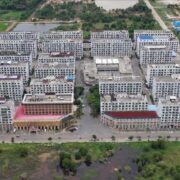Rizal in Frankfurt

The Philippine booth at the Frankfurt Bookfair has a display of the latest titles from various publishers including my book “Cabinet of Curiosities.” Novels and komiks have more universal appeal and publishers have expressed much interest in them. A pity my work on Philippine history addresses Filipinos rather than international readers. Surely, there is a market in homesick Filipinos around the globe that requires at least an overseas distributor.
To prepare for the panel discussion “When History Haunts Literature,” I reviewed Rizal’s stay in Germany and to my pleasant surprise found that he visited Frankfurt on Aug. 13, 1886. Same day as my birthday. When we think of Rizal and Germany, we focus on Berlin, where he completed and published “Noli me tangere,” and Heidelberg, where he learned eye surgery and German. Rizal traveled around Germany by train and also took a long cruise along the Rhine, drawing the ruins of castles in his notebook.
Rizal’s travel diaries are a mixed bag of impressions and digressions. Shortly before arrival in Frankfurt, he noticed that the houses on the countryside had tile rather than slate roofs. His keen sense of observation sometimes made him, what we would call today, “marites.” He described a married couple on the train as follows : “… he is young and is not ugly. She is old and not passable. They caress each other, and she brings her forehead closer to his as if she wanted to kiss him. She has a bigote (moustache).” He hints but does not state that theirs was a marriage of convenience rather than love.
For him, Frankfurt was “the second most beautiful [German] city I have seen.” I assume, second to the university town of Heidelberg. On arrival, he noted that, “Frankfurt is a happy and beautiful city. Buildings are beautiful, elegant, and well-built.” It is unfortunate that much of Frankfurt that Rizal saw was destroyed during World War II, yet I tried to retrace his steps 138 years before.
Teodoro Agoncillo taught me that a historian should always try to physically visit historic sites because even if the landscape has changed, you can still find things or impressions to supplement what you read in archival texts and printed books. Pedro Ortiz Armengol taught me the same thing when we retraced Rizal’s “Manila” by following Ibarra walking in Binondo and San Niclolas as mentioned in “Noli me tangere.” Ortiz Armengol said that “the landscape of a city may change, but its streets and outline remain.”
I decided to spend on roaming to use Google Maps and my research easier. My first stop were two city monuments that Rizal saw, both monuments relating to books and printing. On my way to the statue of Goethe on Goetheplatz, I passed by a square called Rossmarkt that had a statue of Gutenberg, the father of the printing press that made the book as we know it possible. Rizal was dismissive of the monument, noting that “Gutenberg and two of his companions did not attract my attention.” Then I got to the Goetheplatz with the statue of Goethe in noble dark bronze that made the fresh layer of bird poop on his head stand out. Rizal drew the head of Goethe from the right side of the monument and described the statue as: “beautiful, except that he looks more like a rich banker than a poet.”
A kilometer away was the Old Frankfurt Opera house, that was destroyed during World War II but was completely rebuilt and reopened in 1981. It stands today, very much as Rizal saw it in 1886:
“… [an] elegant edifice, the second beautiful theater that I have seen, [next to Paris?] built in white stone, surrounded by pillars and lanterns … [on] top a beautiful sculpted figure of Pegasus, below it the Three Graces and Four Muses, [and] Apollo riding in a chariot drawn by two nymphs in bronze … It’s a pity the building does not stand on a high pedestal that can show off its beauty. That would undoubtedly be better.”
Walking around Frankfurt following Rizal’s footsteps shows that like many other cities he visited like London, Paris, Madrid, Hong Kong, Singapore, Berlin, he contained his tour within a comfortable radius of 3-4 kilometers. Based on my phone, I made 25,000 steps following Rizal. From the old town, I crossed the main river to visit the Staedel Institut, a museum Rizal visited and described cattily as:
“… a magnificent edifice of marble, and the mosaic is employed with great taste, I was pleasantly surprised it has a magnificent entrance with a wide and beautiful marble staircase with marble balusters and marble walls. I think the structure costs more than it contains.”
Rizal did not describe anything in the Staedel museum, but he visited another museum with a marble image of “Ariadne on a panther” that was the most famous sculpture in Germany at the time, one that spawned a thousand tourist souvenirs. Next year, when the Philippines is guest of honor at the Frankfurt Bookfair, I will propose a walking tour of Rizal’s Frankfurt.
Comments are welcome at aocampo@ateneo.edu
Ambeth is a Public Historian whose research covers 19th century Philippines: its art, culture, and the people who figure in the birth of the nation. Professor and former Chair, Department of History, Ateneo de Manila University, he writes a widely-read editorial page column for the Philippine Daily Inquirer, and has published over 30 books—the most recent being: Martial Law: Looking Back 15 (Anvil, 2021) and Yaman: History and Heritage in Philippine Money (Bangko Sentral ng Pilipinas, 2021).


















